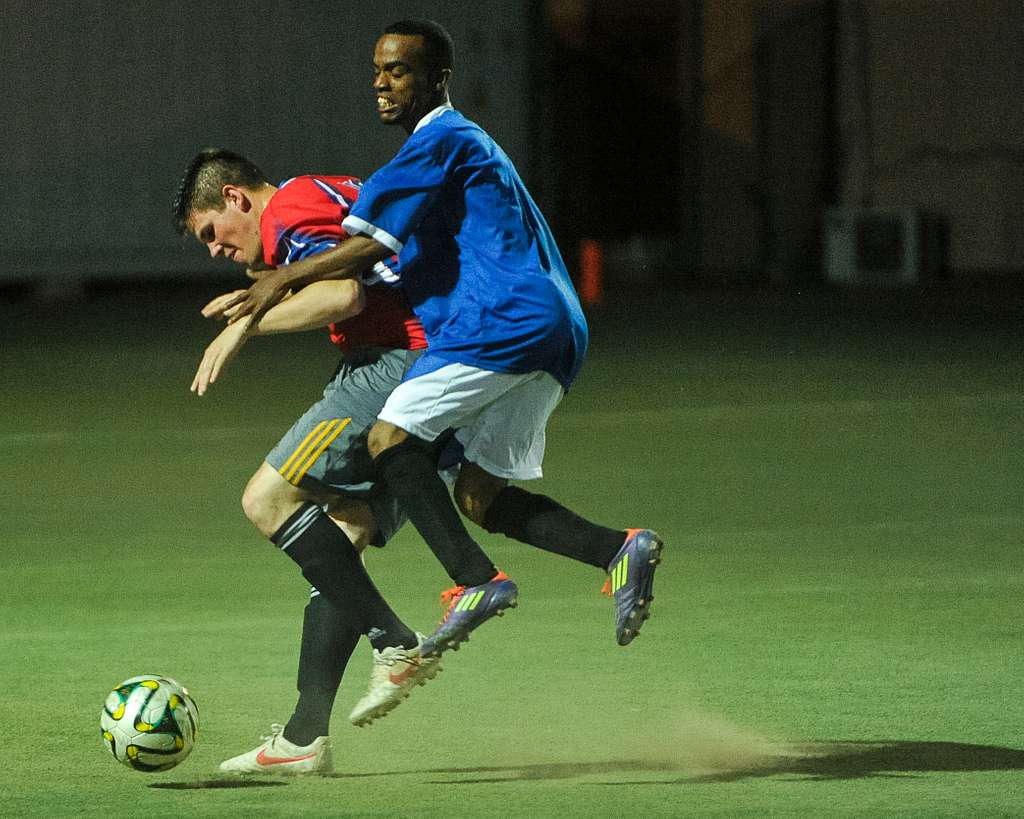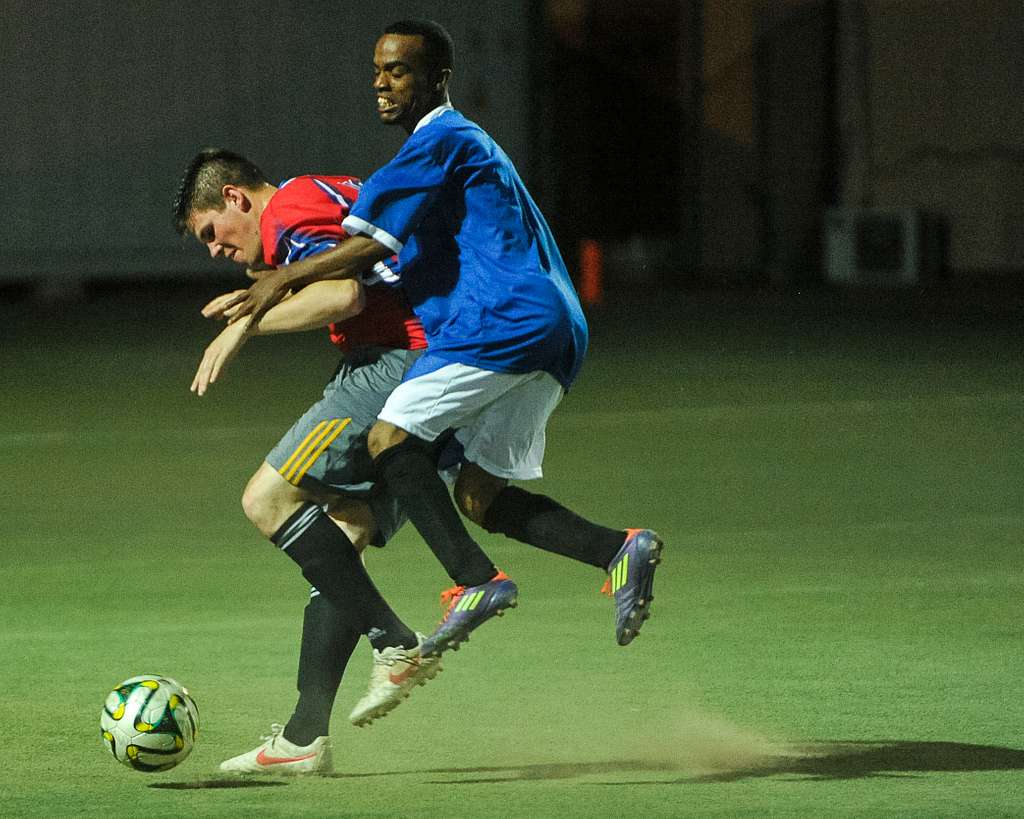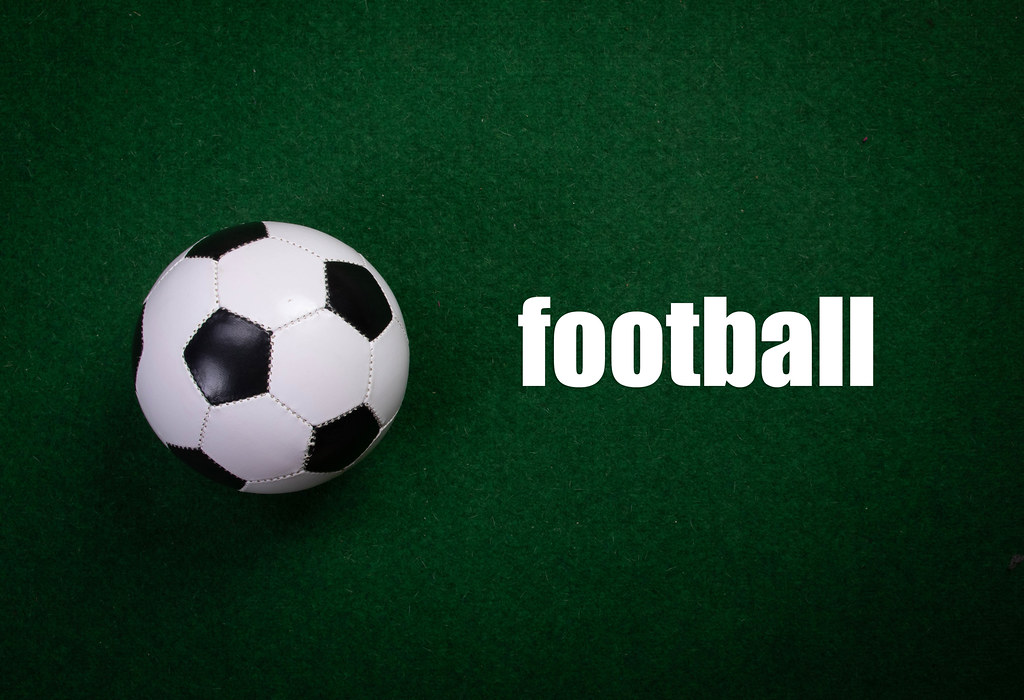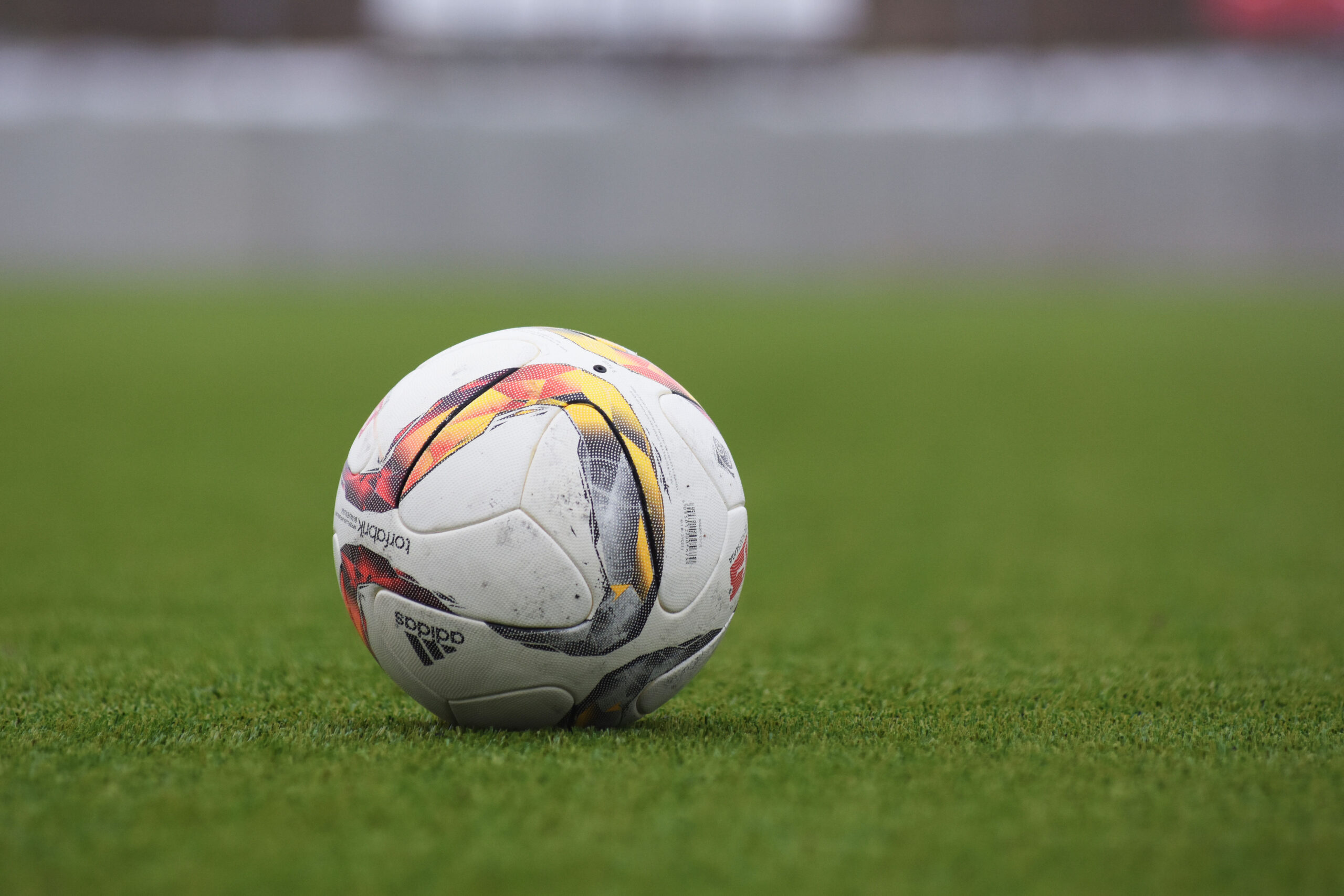How To Control A Soccer Ball

Controlling a soccer ball is an essential skill that every player needs to master. It’s the foundation for executing passes, dribbles, and shots. Did you know that the average professional soccer player touches the ball over 2,000 times during a game? That’s a lot of opportunities to showcase control and skill on the field. So, how can you improve your ability to control a soccer ball?
When it comes to controlling a soccer ball, practice is key. Start by focusing on your first touch, which is the initial contact you make with the ball when receiving a pass or a long ball. Aim to receive the ball in a controlled manner, cushioning it with the appropriate part of your foot or body. As you practice, pay attention to your body position and balance, ensuring that you are in a stable position to maintain control. Additionally, work on improving your ball control skills by practicing different drills such as juggling, dribbling through cones, and playing small-sided games. With consistent practice, you’ll develop the technique and confidence needed to control a soccer ball effectively.

Improve Your Soccer Skills: How to Control a Soccer Ball
One of the most essential skills in soccer is ball control. The ability to control the ball effectively allows players to maintain possession, maneuver around opponents, and execute accurate passes and shots. Whether you’re a beginner or an experienced player, mastering ball control will significantly enhance your game. In this article, we will guide you through step-by-step instructions on how to control a soccer ball like a pro.
Step 1: Master the First Touch
The first touch is crucial in controlling the soccer ball. It refers to the initial contact you make with the ball when it comes to you. A good first touch sets you up for success by cushioning the ball and allowing you to maintain possession. Here’s how to master your first touch:
Focus on Your Body Position
Your body position plays a vital role in controlling the ball effectively. As the ball approaches you, position your body in a way that allows you to see the ball and react quickly. Square your shoulders to face the oncoming ball and keep your knees slightly bent to maintain balance.
When receiving a high ball, lean back slightly to cushion its impact. For low balls, lean forward to ensure a proper connection with the ball. Remember to keep your eyes on the ball throughout the process.
Use the Right Surface of Your Foot
The surface you use to control the ball is crucial. Generally, the inside of your foot provides the most accuracy and control. However, during high-pressure situations, you may need to use other surfaces, such as the outside of your foot or the sole, to quickly redirect the ball.
Practice different types of touches with each surface to become comfortable with using them in various game situations.
Cushion the Ball
Mastering the art of cushioning the ball will allow you to absorb the momentum and control the ball with finesse. As the ball comes towards you, time your first touch to coincide with the ball’s contact point. Soften the impact by giving a little give with your foot, cushioning the ball’s speed, and directing it to your desired target.
Practice Drills
The best way to improve your first touch is through regular practice. Set up drills that involve receiving different types of passes, such as high balls, long balls, and ground passes. Focus on your body positioning, surface usage, and cushioning techniques. The more you practice, the more natural your first touch will become.
Step 2: Enhance Your Dribbling Skills
Dribbling is an essential component of ball control. It allows you to maneuver around opponents, maintain possession, and create scoring opportunities. Follow these steps to enhance your dribbling skills:
Develop Close Ball Control
Close ball control is crucial in preventing defenders from easily dispossessing you. Practice dribbling the ball while keeping it within close proximity to your feet. Use short, quick touches to maintain control and shift the direction of the ball without losing possession.
Focus on keeping your head up while dribbling to be aware of your surroundings. This will enable you to make quick decisions and evade opponents.
Improve Your Change of Pace
Change of pace is crucial in beating defenders. Learn to accelerate and decelerate quickly to create space and confuse opponents. Practice shifting your speed during dribbling drills, alternating between bursts of speed and slower movements to catch defenders off guard.
Remember to use your body to shield and protect the ball from opponents while dribbling. Use your arms and shoulders to create a barrier between the ball and the defender.
Master Different Dribbling Techniques
There are various dribbling techniques you can incorporate into your game, such as the inside cut, outside cut, step-over, and fake moves. Spend time practicing these moves and focus on executing them with precision and speed.
Experiment with these techniques during training sessions and gradually incorporate them into your game to surprise opponents and create scoring opportunities.
Step 3: Improve Your Passing Accuracy
Passing accuracy is crucial in maintaining possession and setting up goal-scoring opportunities. To improve your passing ability, follow these steps:
Master Different Types of Passes
There are various types of passes in soccer, including short passes, long passes, through balls, chipped passes, and more. Spend time practicing each type of pass to become comfortable with its execution and develop accuracy.
Focus on the technique, such as the angle of your foot, the contact point on the ball, and the follow-through. Practice passing with both feet to improve your versatility.
Improve Your Vision and Decision-Making
Good passing requires excellent vision and decision-making skills. Train yourself to scan the field regularly, assess the positioning of your teammates and opponents, and make quick and accurate decisions.
Anticipate the movement of your teammates and deliver passes to their advantage. Develop the ability to play both short and long passes accurately to suit different game situations.
Practice Passing Drills
Regularly participating in passing drills will enhance your passing accuracy and technique. Set up drills that involve passing to stationary targets, passing in a moving grid, and practicing combination passes with teammates.
Pay attention to your body positioning, the weight of your pass, and the accuracy of your delivery. Practice passing with different parts of your foot to develop versatility in your passes.
Step 4: Enhance Your Ball Control in Air
Being able to control the ball effectively in the air will give you an advantage in aerial duels, receiving long passes, and executing headers. Follow these steps to enhance your ball control in the air:
Focus on Your Timing and Body Position
Aerial control requires good timing and positioning. Time your jump to meet the ball at the optimal point and position your body to cushion the ball’s impact.
Plant one foot on the ground and use your arms for stability. As the ball approaches, propel yourself into the air, extending your neck to make contact with the ball. Use your forehead or any other desired part of your head to guide the ball’s direction.
Practice Heading Technique
Practice heading drills regularly to improve your technique and precision. Set up drills that involve heading towards specific targets, heading while jumping, and winning aerial duels against opponents.
Focus on timing your jump, making solid contact with the ball, and directing the ball accurately towards your desired target. Gradually increase the difficulty of the drills to challenge yourself and improve your ball control in the air.
Step 5: Compete in Game-like Scenarios
To truly master ball control, it’s important to apply your skills in realistic game situations. Participate in scrimmage matches, small-sided games, and competitive matches to test your abilities and adapt to the dynamic nature of real gameplay.
Focus on implementing the techniques you’ve learned in this article while under pressure and in different tactical scenarios. Learn to make quick decisions, maintain possession, and execute accurate passes and shots when faced with opponents.
Remember, practice is key to mastering ball control. Dedicate regular time to refine your skills, push yourself outside your comfort zone, and continuously strive to improve. With consistent effort and dedication, you’ll be able to control a soccer ball with finesse and play like a true professional.
Now, get out on the field and start perfecting your ball control skills! Enjoy the beautiful game of soccer and unlock your full potential as a player.


Frequently Asked Questions
Here are some commonly asked questions about how to control a soccer ball, along with expert answers to help you improve your skills on the field.
1. What are some fundamental techniques to control a soccer ball?
To effectively control a soccer ball, you should focus on mastering the following fundamental techniques:
First, use the inside of your foot to cushion the ball as it arrives, ensuring a soft touch. Second, use your instep to stop the ball quickly and maintain possession. Finally, practice trapping the ball with your chest or thigh to redirect its path. These techniques will give you better control over the ball and allow you to make more precise passes and shots.
2. Is there a specific way to improve ball control while dribbling?
Yes, there are several ways to improve ball control while dribbling:
One technique is to practice dribbling with both feet. This will enhance your ability to change direction quickly and maintain control in different situations. Another helpful tip is to keep your head up while dribbling, allowing you to scan the field for open teammates or potential obstacles.
3. How can I improve my control when receiving high balls?
To improve your control when receiving high balls, follow these steps:
First, position yourself under the ball, ensuring you have a clear line of sight. As the ball descends, use your arms as a buffer to absorb its impact. Concentrate on cushioning the ball as softly as possible with your chest or foot, while adjusting your body to maintain balance. With practice, you’ll become more comfortable and adept at controlling high balls.
4. What exercises can I do to enhance ball control?
Some effective exercises to enhance ball control include:
1. Cone dribbling: Set up a series of cones and practice dribbling the ball through them, focusing on maintaining control and precision.
2. Wall passes: Stand about 5-10 feet away from a wall and practice passing the ball against it, using different parts of your foot to control its trajectory.
3. Juggling: Improve your ball control by juggling the ball with your feet, thighs, and head. Challenge yourself to increase the number of consecutive touches without dropping the ball.
5. How important is practice in mastering ball control?
Practice is crucial in mastering ball control. The more time you spend on the field, honing your skills and repeating drills, the better control you will have over the soccer ball. Consistent practice allows your muscles to develop the necessary muscle memory, making ball control more instinctual and natural in game situations.
EVERY Way to Control a Ball in Football or Soccer
So there you have it! Controlling a soccer ball is all about practice and technique. By focusing on your first touch, using the right part of your foot, and keeping your eyes on the ball, you can improve your control and become a better player.
Remember, it’s important to start with simple exercises and gradually increase the difficulty level. Take the time to master each step before moving on to the next one. With dedication and perseverance, you’ll soon be able to control the soccer ball like a pro!


